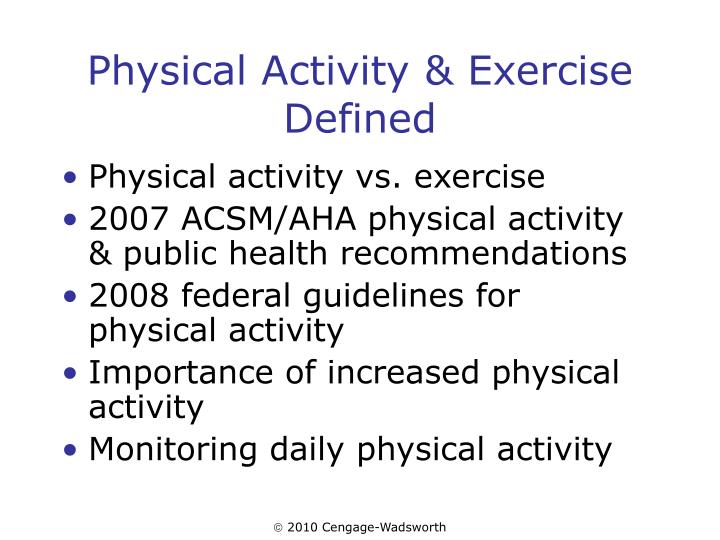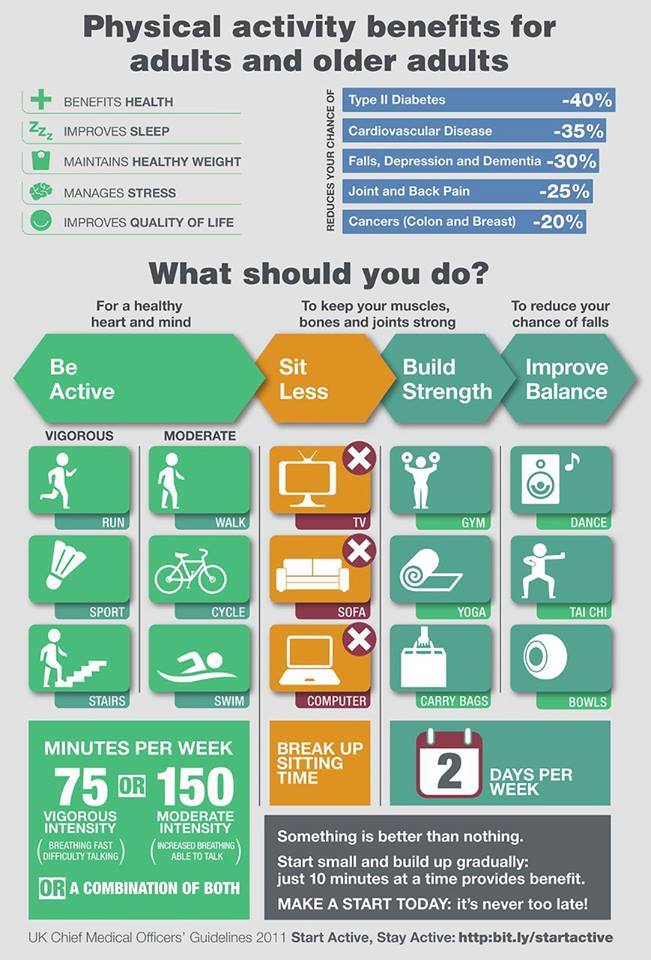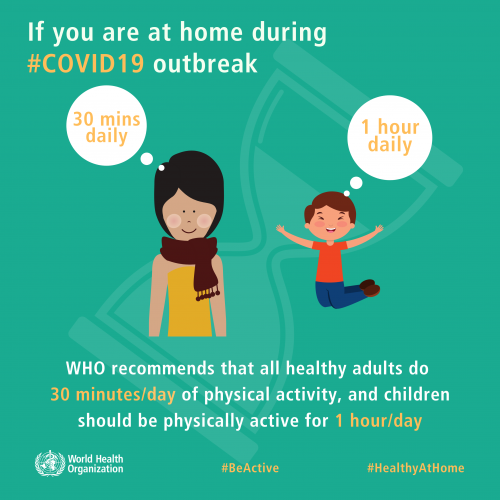

#WORLD HEALTH ORGANIZATION PHYSICAL ACTIVITY DEFINITION FULL#
Any activity is better than none, and more is better still.Ĭhristopher Whitty - Chief Medical Officer full interview The guidelines state that for good physical and mental health, adults should aim to be physically active every day. It also draws on new evidence to develop additional guidance on being active during pregnancy and after giving birth, and for disabled adults. The updated UK CMOs’ physical activity guidelines refreshed the 2011 guidelines across all age groups. reducing inequalities for people with long-term conditions.developing and maintaining physical and mental function and independence.


It also helps keep symptoms under control, prevent additional conditions from developing, and reduce inequalities. However, evidence shows that regular physical activity can help prevent or manage many common conditions such as type 2 diabetes, cardiovascular disease and some cancers. One in 3 adults in England live with a long-term health condition and they are twice as likely to be amongst the least physically active. It also sets out the ambition of getting everybody active in the 2020s, including those of us who are already living with a health condition. The government’s prevention green paper highlights that becoming more active is good for our mental and physical health, and reduces our risk of developing a number of health conditions. If you are in doubt, please see a doctor.This edition of Health Matters focuses on the benefit of physical activity for the prevention and management of long-term conditions in adults. However, some people may need to get a medical clearance before they exercise. Weight-bearing exercise can help increase bone mass during growth, maintain peak bone mass during adulthood and reduce the rate of bone loss during aging.įlexibility activity (such as Tai Chi and yoga) keeps muscles relaxed and joints mobile.īecoming more active is safe for most people. Resistance exercise (such as weight lifting and resistance band workouts) can not only increase muscular strength and endurance but also maintain or increase muscle mass. Level of intensityĮxamples: jogging, fast swimming, fast dancing, jumping rope, tennis (singles), basket ball, soccerĮxamples: playing with children or dogs at a fast pace, heavy gardening (such as continuous digging or hoeing)Įxamples: brisk walking, water aeorbics, tennis (doubles), biking on level ground, sports involving catch and throw (such as volleyball and baseball)Įxamples: stair-climbing, carrying small children, mopping floor, scrubbing the bathtub, car washing, general gardeningĮxamples: light walking, stretching, lifting hand weights, push-ups against the wallsĮxamples: standing, washing dishes, doing laundry, cooking, playing pianoīesides, different types of physical activity confer different health benefits. While vigorous-intensity physical activity (e.g., jogging) can provide greater benefits for physical fitness and burn more calories per unit of time than moderate-intensity physical activity (such as brisk walking), engaging in low-intensity physical activity (such as light walking) is better than no physical activity at all. Both exercise and non-exercise physical activity can further be classified by the level of intensity: light, moderate and vigorous. The other is non-exercise physical activity, such as standing, commuting to and from school or work, or participating in household chores or occupational work. One is exercise that involves structured and repetitive bodily movements. It can be divided into two main categories. Physical activity refers to any bodily movement produced by skeletal muscles that increase energy expenditure above a basal level.

Classification of Physical Activity and Level of Intensity


 0 kommentar(er)
0 kommentar(er)
